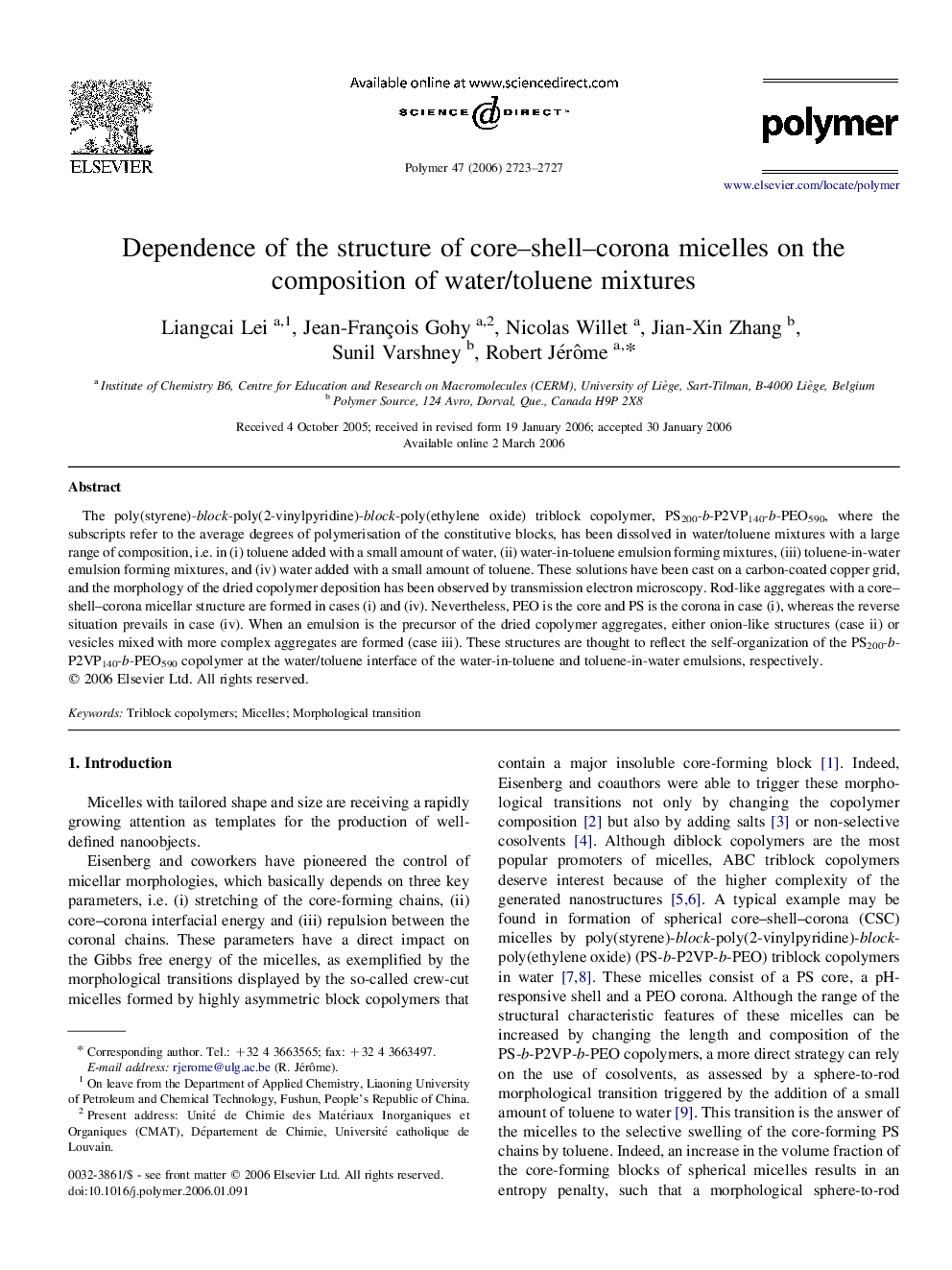| Article ID | Journal | Published Year | Pages | File Type |
|---|---|---|---|---|
| 5190813 | Polymer | 2006 | 5 Pages |
Abstract
The poly(styrene)-block-poly(2-vinylpyridine)-block-poly(ethylene oxide) triblock copolymer, PS200-b-P2VP140-b-PEO590, where the subscripts refer to the average degrees of polymerisation of the constitutive blocks, has been dissolved in water/toluene mixtures with a large range of composition, i.e. in (i) toluene added with a small amount of water, (ii) water-in-toluene emulsion forming mixtures, (iii) toluene-in-water emulsion forming mixtures, and (iv) water added with a small amount of toluene. These solutions have been cast on a carbon-coated copper grid, and the morphology of the dried copolymer deposition has been observed by transmission electron microscopy. Rod-like aggregates with a core-shell-corona micellar structure are formed in cases (i) and (iv). Nevertheless, PEO is the core and PS is the corona in case (i), whereas the reverse situation prevails in case (iv). When an emulsion is the precursor of the dried copolymer aggregates, either onion-like structures (case ii) or vesicles mixed with more complex aggregates are formed (case iii). These structures are thought to reflect the self-organization of the PS200-b-P2VP140-b-PEO590 copolymer at the water/toluene interface of the water-in-toluene and toluene-in-water emulsions, respectively.
Related Topics
Physical Sciences and Engineering
Chemistry
Organic Chemistry
Authors
Liangcai Lei, Jean-François Gohy, Nicolas Willet, Jian-Xin Zhang, Sunil Varshney, Robert Jérôme,
